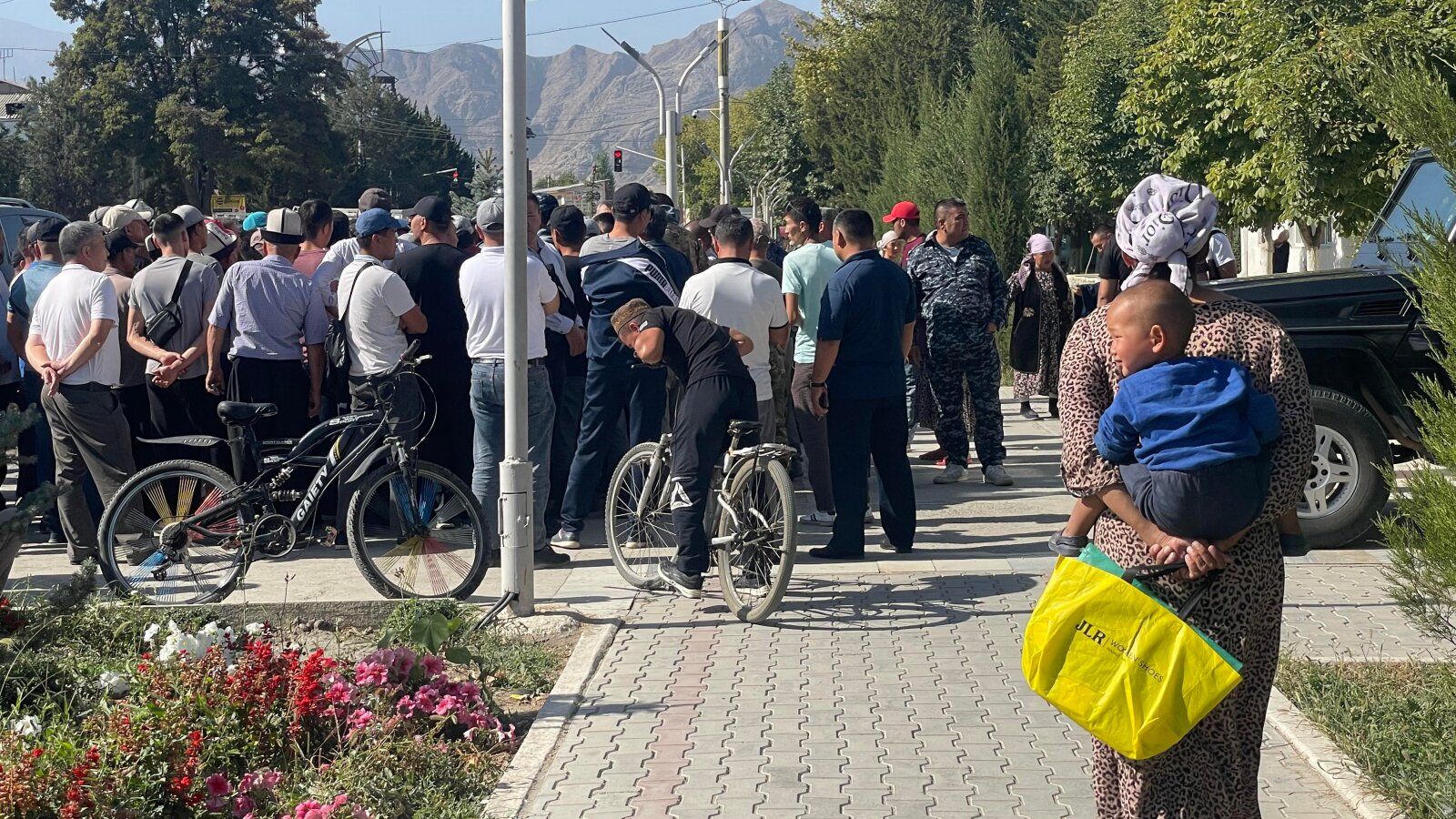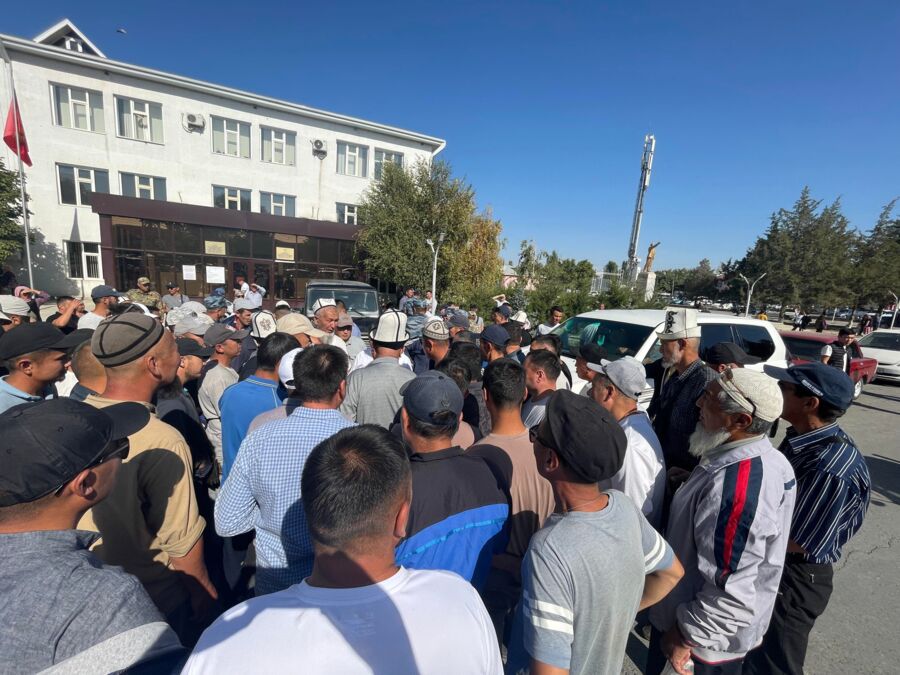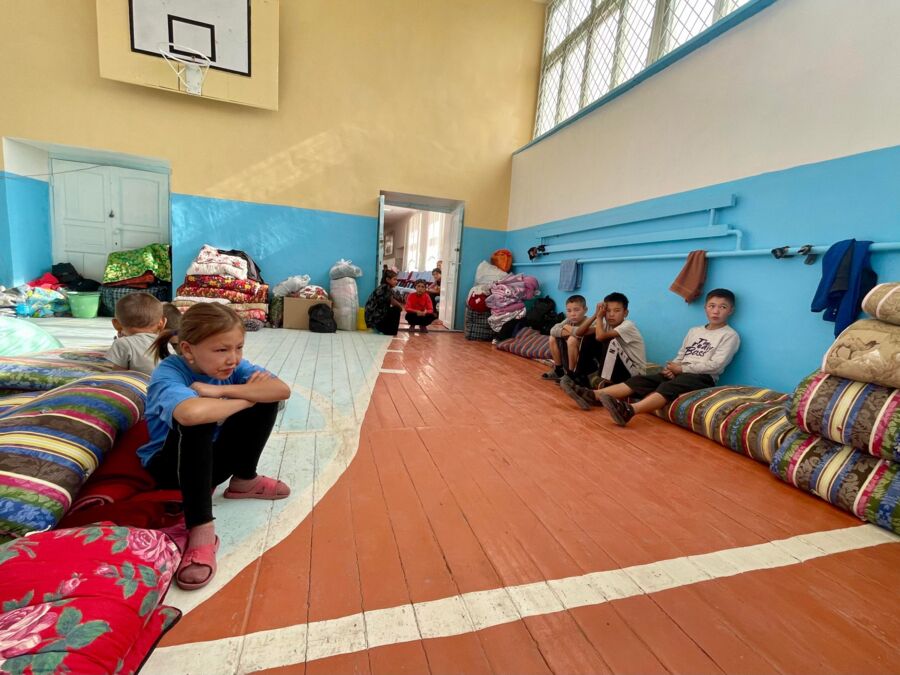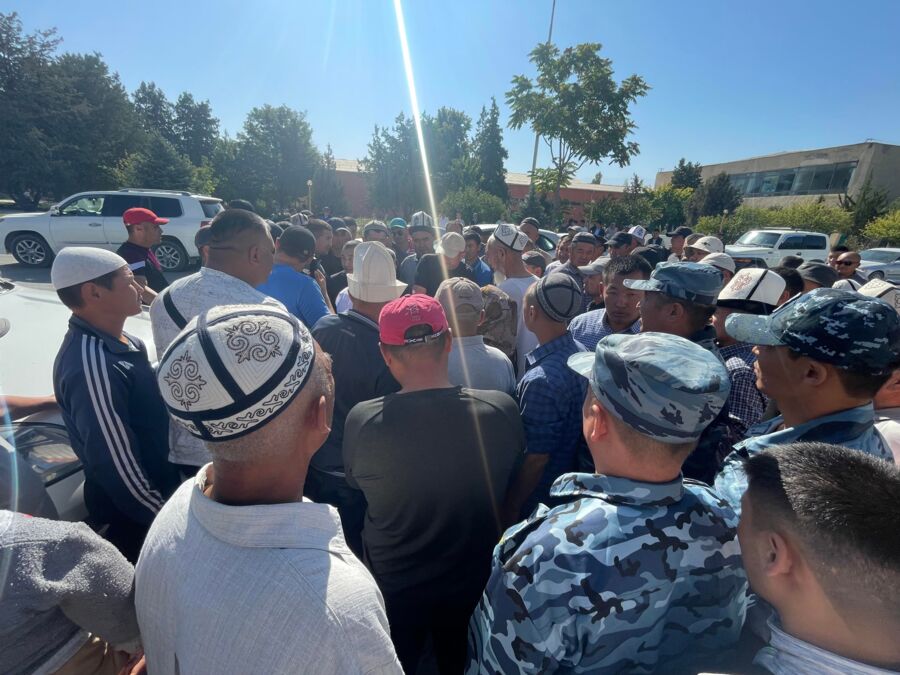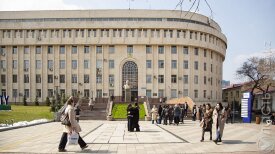Hundreds of thousands were forced to flee the conflict zones after Tajikistan launched an aggression into Kyrgyzstan’s territory, escalating a border skirmish that started on September 14.
The Kyrgyz town of Batken, not far from the border with Tajikistan, became the theater of a massive relocation from several of the villages that were under attack until the final ceasefire on September 18.
An eyewitness account by Ivar Dale, senior policy advisor at the human rights organization Norwegian Helsinki Committee, described the situation one week after the ceasefire as still tense.
“People lost their home and family members in the conflict, they are clearly traumatized,” Dale told Vlast.
Besides people in tears, however, there was also disappointments on the terms of the final agreement between the two governments on the management of the border zones.
“An angry crowd had gathered at the Presidential Representative Office in Batken. They were unhappy with the land agreements made between Kyrgyzstan and Tajikistan,” Dale recounted.
A four-day conflict
Initially, the two sides exchanged gunfire, leading to casualties and damages on both sides. But according to sources on the ground, the following days the Tajik army entered Kyrgyz territory and went after military and civilian logistical centers.
On September 17, the shelling of the town of Batken and the display of a Tajik flag over a school were seen as a major act of aggression against Kyrgyzstan. The day before, presidents Sadyr Japarov of Kyrgyzstan and Emomali Rakhmon of Tajikistan met on the sidelines of the Shanghai Cooperation Organization (SCO) Summit in Uzbekistan.
As they spent days side-by-side in Samarkand during the conflict, observers thought that Japarov and Rakhmon could swiftly reach an agreement for a ceasefire and bring the dispute to the diplomatic table.
Instead, ceasefire agreements were repeatedly broken, the shelling persisted, and the death toll continued to rise. Dozens of casualties were reported on both sides.
Notoriously difficult to decipher, the Tajik media engaged in a haphazard propaganda campaign, by creating Telegram channels to sway public opinion. These channels published Russian language content copy-pasted from Kyrgyz sources and edited to show that Kyrgyzstan struck first.
The disinformation campaign also involved the Tajik ministry of foreign affairs which outlined a partial report of the events on its website and was promptly de-bunked by its Kyrgyz counterpart.
As pointed out on Twitter by OSCE Academy scholar Asel Doolotkeldieva, who lives in Bishkek, the Kyrgyz side also contributed to the escalation of the conflict.
“Populist moves by the Kyrgyz government and militarization of borders” preceded the initial clashes, according to Doolotkeldieva, who wrote about Japarov’s populism in an analytical piece after his rise to power. “[The Kyrgyz government] also threw a big military show just in front of Rahmon's nose.”
Japarov, Kyrgyzstan’s populist equivalent to Donald Trump, had beefed up the military equipment for border troops in 2022, through both exercises and new drones, sniper rifles, and other weapons, purchased from Turkey in late 2021.
The conflict had stayed frozen for decades since the two countries became independent in 1991. Sudden outbursts starting out as border clashes had never escalated until April last year.
Over three days in April 2021, a dozen villages in the Batken region were affected by Tajik mortar fire, leading to dozens of civilian victims on both sides.
Given the disproportion of victims and displaced civilians on the Kyrgyz side both in 2021 and in 2022, however, observers are inclined to place the blame on the Tajik side for an excessive use of force with the ultimate goal to seize territorial gains.
Calling it by its name
Public opinion is divided regarding the definition of the events. Russian officials used the more neutral term “border clashes,” which seeped through several media outlets also in English.
In a long Twitter thread, Madeleine Reeves, a professor of anthropology at the University of Manchester who focused on the porous border between Kyrgyzstan and Tajikistan, argued that the language used in describing the conflict carries political significance.
“The language of ‘border clash’ or ‘border skirmish’ … occludes more than illuminates,” Reeves wrote.
A “military incursion” or an “attack into Kyrgyz territory” by the Tajik army would be a better definition, according to experts. There is in fact a difference between confining the shelling to the will of border guards and attributing the responsibility to the strategic planning of an army.
Most observers agree that this time Tajikistan played the role of the aggressor.
Erica Marat, an academic from Kyrgyzstan teaching at the US National Defense University, went as far as to say that “Rakhmon invaded southern Kyrgyzstan to grab territory and strengthen his regime at home.”
A bleak future
In Kyrgyzstan, fellow residents of neighboring districts were quick to offer shelter to the displaced. Makeshift signs saying “Ui bar” (“housing available” in Kyrgyz) mushroomed along the road to the capital, Bishkek.
On September 19, the Kyrgyz government announced a day of mourning for the victims. The same day, a meeting of the two countries’ security service heads led to the signing of a firm ceasefire and a mutual de-escalation of the military presence along the border.
Neighboring countries were largely silent about the conflict. On social media, Kazakhstani residents sided with the Kyrgyz people, as they could not trust the information coming from Tajikistan.
As yet another conflict subsides, observers argue that Tajikistan could have the upper hand in these border areas in the long term. Peter Leonard, a journalist with extensive experience traveling the area, wrote an op-ed for Meduza focusing on the demographic and economic imbalance in the region.
“[The Kyrgyz] side of the border has little to hold people down. Jobs are sparse, which drives large numbers of men and women to seek work in Russia, and much of the land is unyielding when compared to what the Tajiks have.”
The displacement of Kyrgyz residents at every eruption of the conflict also contributes to the demographic imbalance, argues Reeves. Those who leave, traumatized, the conflict zones are unlikely to return, despite officials saying “it is now safe to go back home.”
In this light, the periodical reheating of the border issue could lead to a weakening of Kyrgyzstan’s position in the area. Residents are now calling once again for the resignation of Kamchybek Tashiev, the head of the State Committee for National Security, who, they argue, failed to manage the escalation of the conflict over the past two years.
Поддержите журналистику, которой доверяют.
